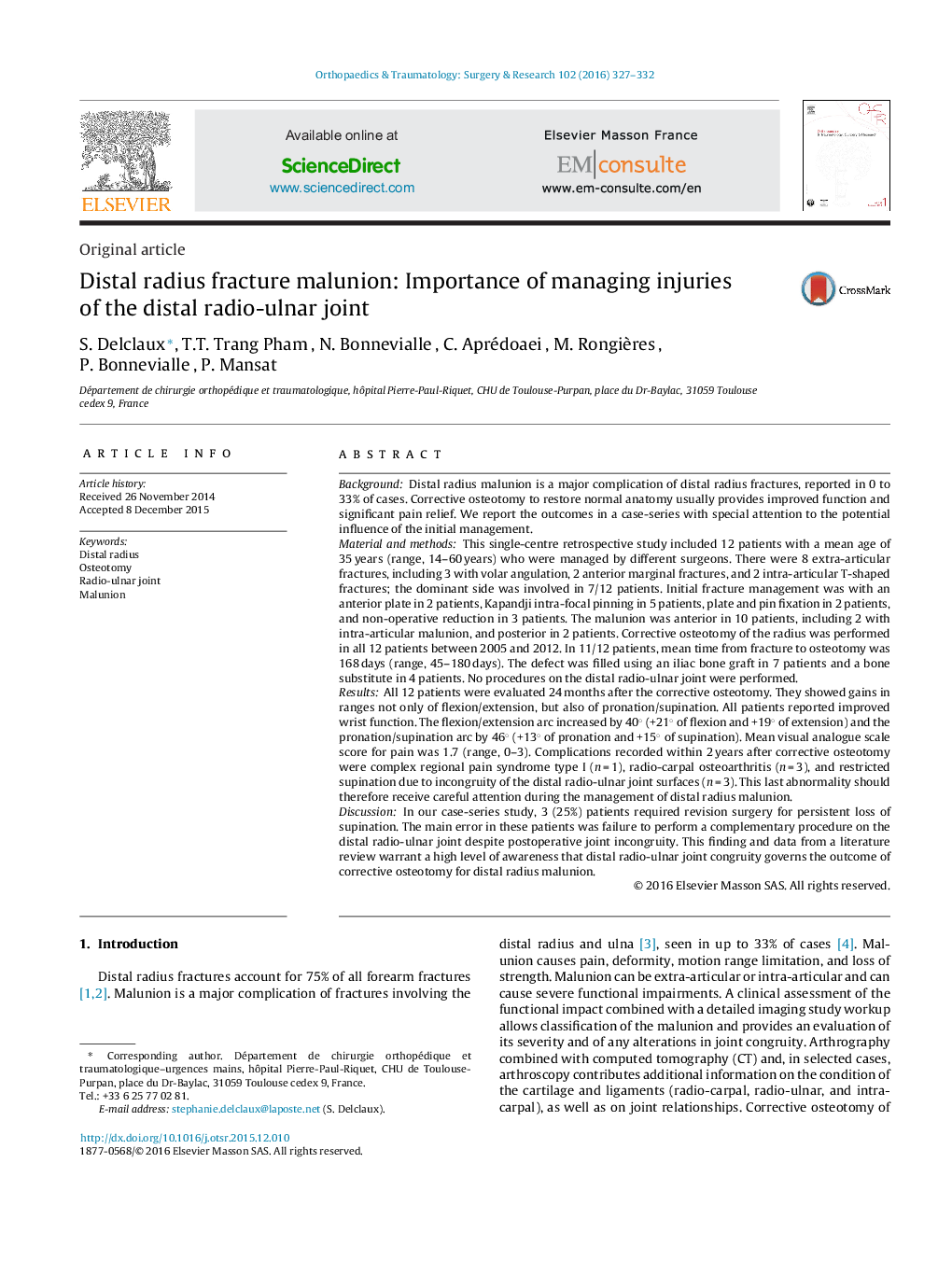| کد مقاله | کد نشریه | سال انتشار | مقاله انگلیسی | نسخه تمام متن |
|---|---|---|---|---|
| 4080734 | 1267565 | 2016 | 6 صفحه PDF | دانلود رایگان |

BackgroundDistal radius malunion is a major complication of distal radius fractures, reported in 0 to 33% of cases. Corrective osteotomy to restore normal anatomy usually provides improved function and significant pain relief. We report the outcomes in a case-series with special attention to the potential influence of the initial management.Material and methodsThis single-centre retrospective study included 12 patients with a mean age of 35 years (range, 14–60 years) who were managed by different surgeons. There were 8 extra-articular fractures, including 3 with volar angulation, 2 anterior marginal fractures, and 2 intra-articular T-shaped fractures; the dominant side was involved in 7/12 patients. Initial fracture management was with an anterior plate in 2 patients, Kapandji intra-focal pinning in 5 patients, plate and pin fixation in 2 patients, and non-operative reduction in 3 patients. The malunion was anterior in 10 patients, including 2 with intra-articular malunion, and posterior in 2 patients. Corrective osteotomy of the radius was performed in all 12 patients between 2005 and 2012. In 11/12 patients, mean time from fracture to osteotomy was 168 days (range, 45–180 days). The defect was filled using an iliac bone graft in 7 patients and a bone substitute in 4 patients. No procedures on the distal radio-ulnar joint were performed.ResultsAll 12 patients were evaluated 24 months after the corrective osteotomy. They showed gains in ranges not only of flexion/extension, but also of pronation/supination. All patients reported improved wrist function. The flexion/extension arc increased by 40° (+21° of flexion and +19° of extension) and the pronation/supination arc by 46° (+13° of pronation and +15° of supination). Mean visual analogue scale score for pain was 1.7 (range, 0–3). Complications recorded within 2 years after corrective osteotomy were complex regional pain syndrome type I (n = 1), radio-carpal osteoarthritis (n = 3), and restricted supination due to incongruity of the distal radio-ulnar joint surfaces (n = 3). This last abnormality should therefore receive careful attention during the management of distal radius malunion.DiscussionIn our case-series study, 3 (25%) patients required revision surgery for persistent loss of supination. The main error in these patients was failure to perform a complementary procedure on the distal radio-ulnar joint despite postoperative joint incongruity. This finding and data from a literature review warrant a high level of awareness that distal radio-ulnar joint congruity governs the outcome of corrective osteotomy for distal radius malunion.
Journal: Orthopaedics & Traumatology: Surgery & Research - Volume 102, Issue 3, May 2016, Pages 327–332